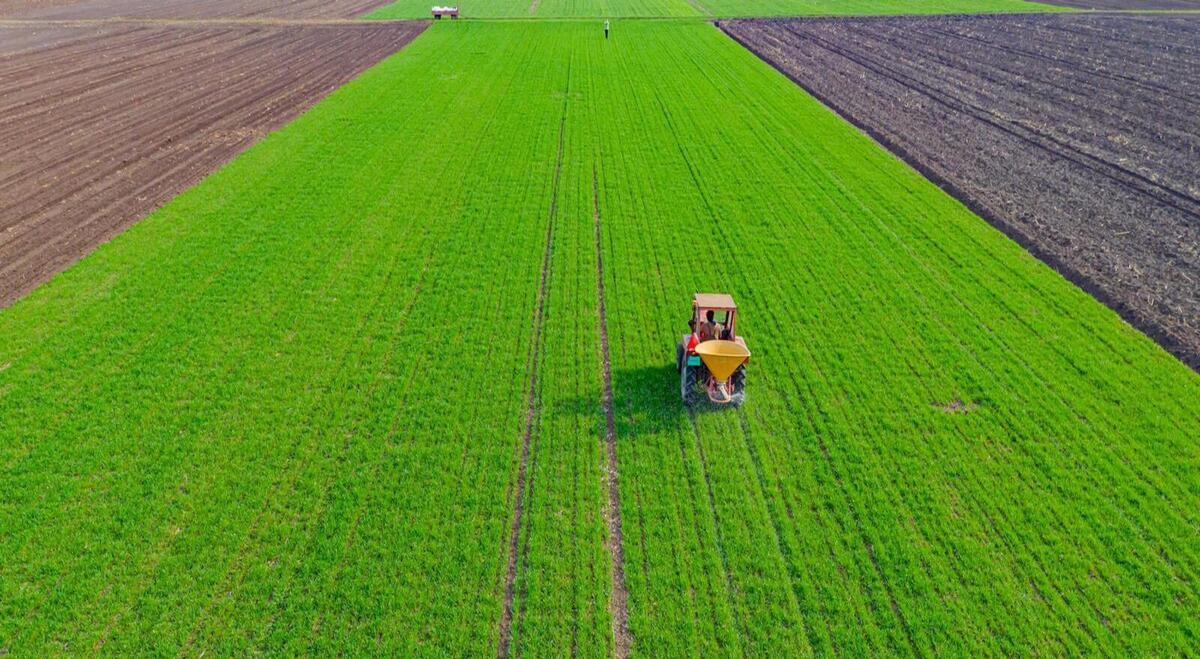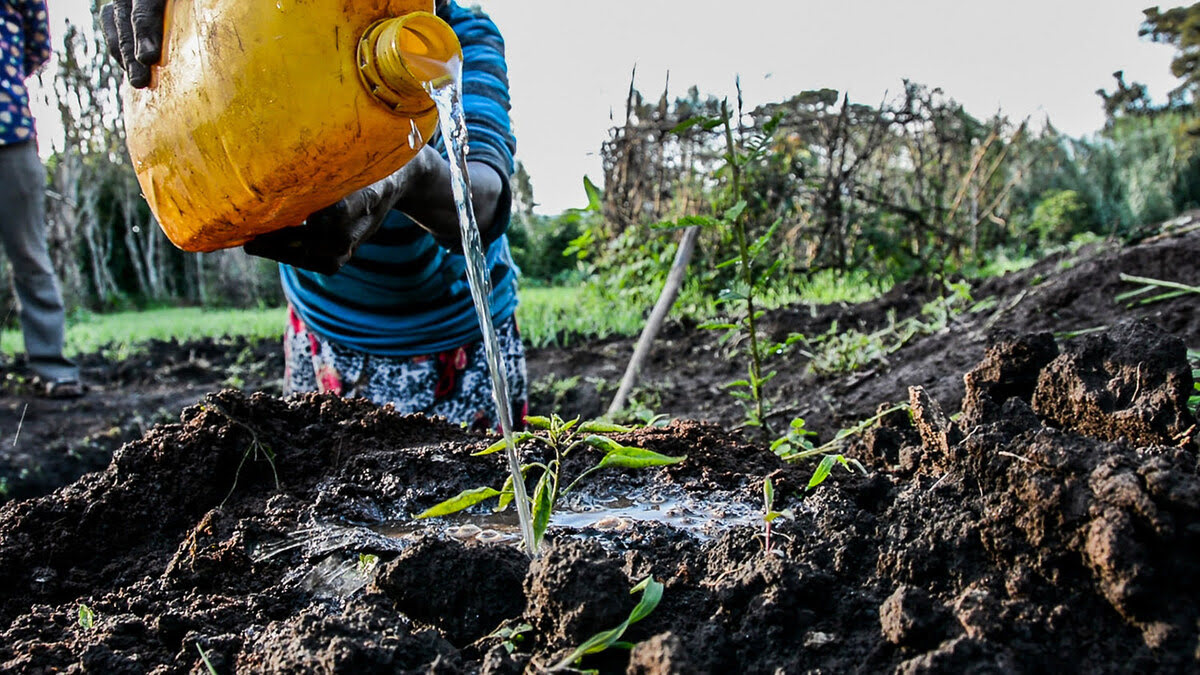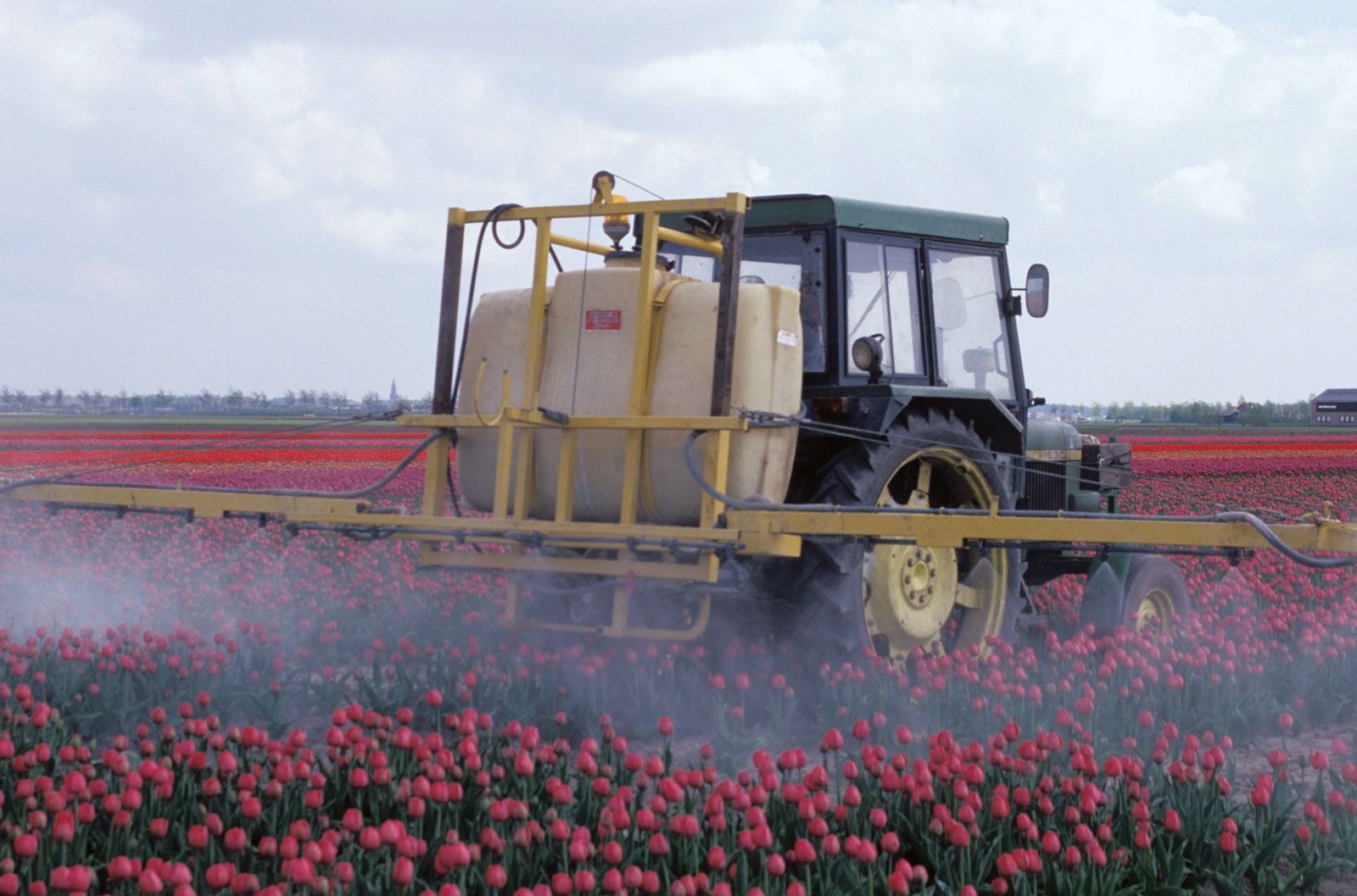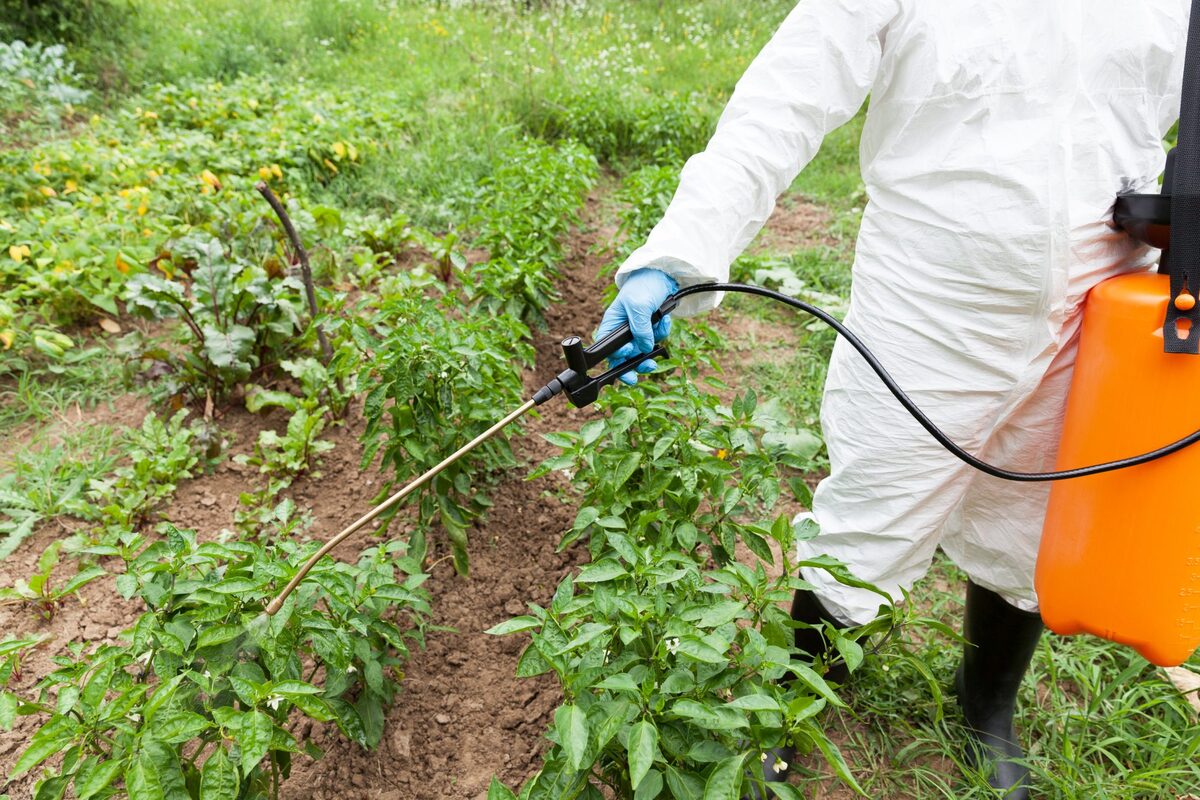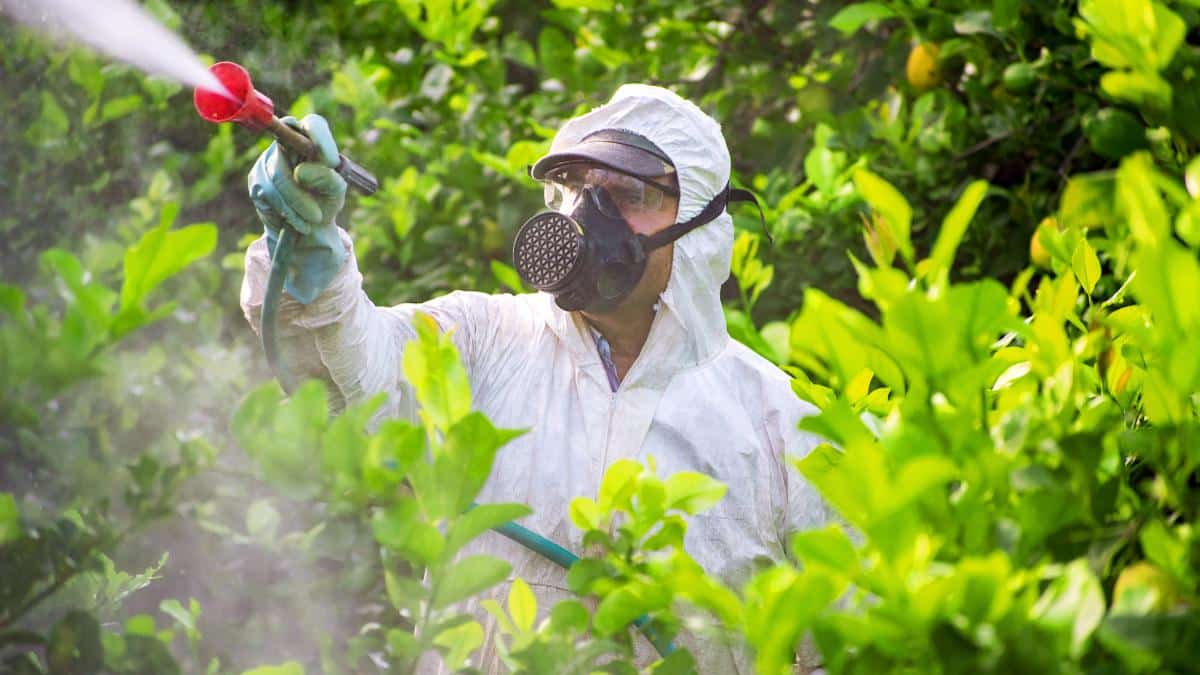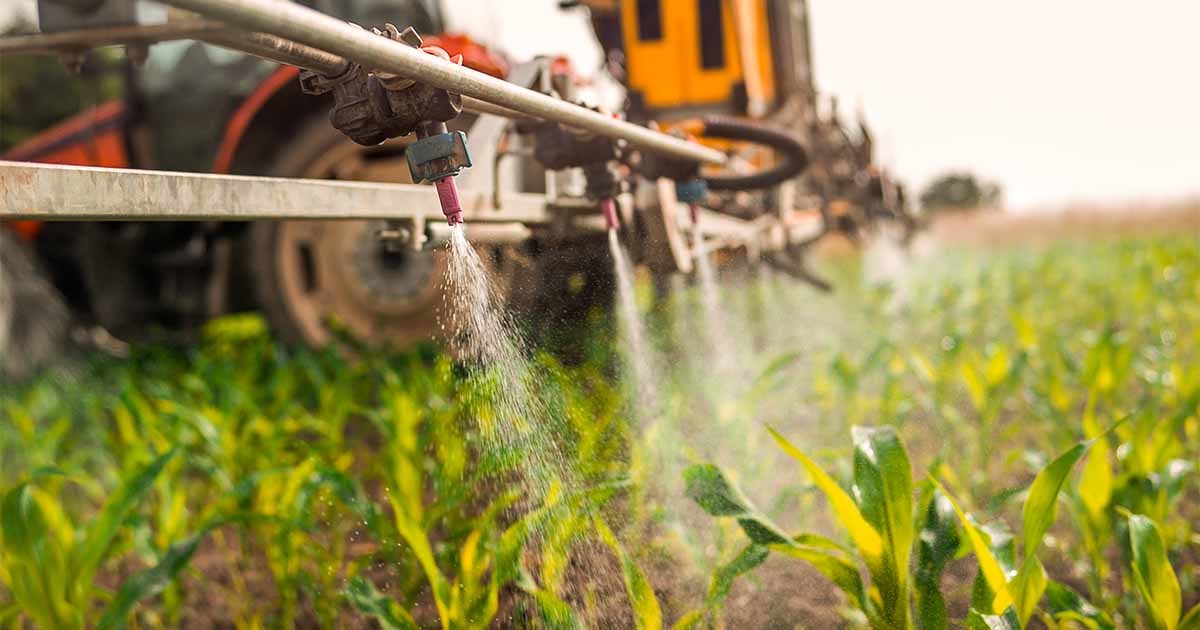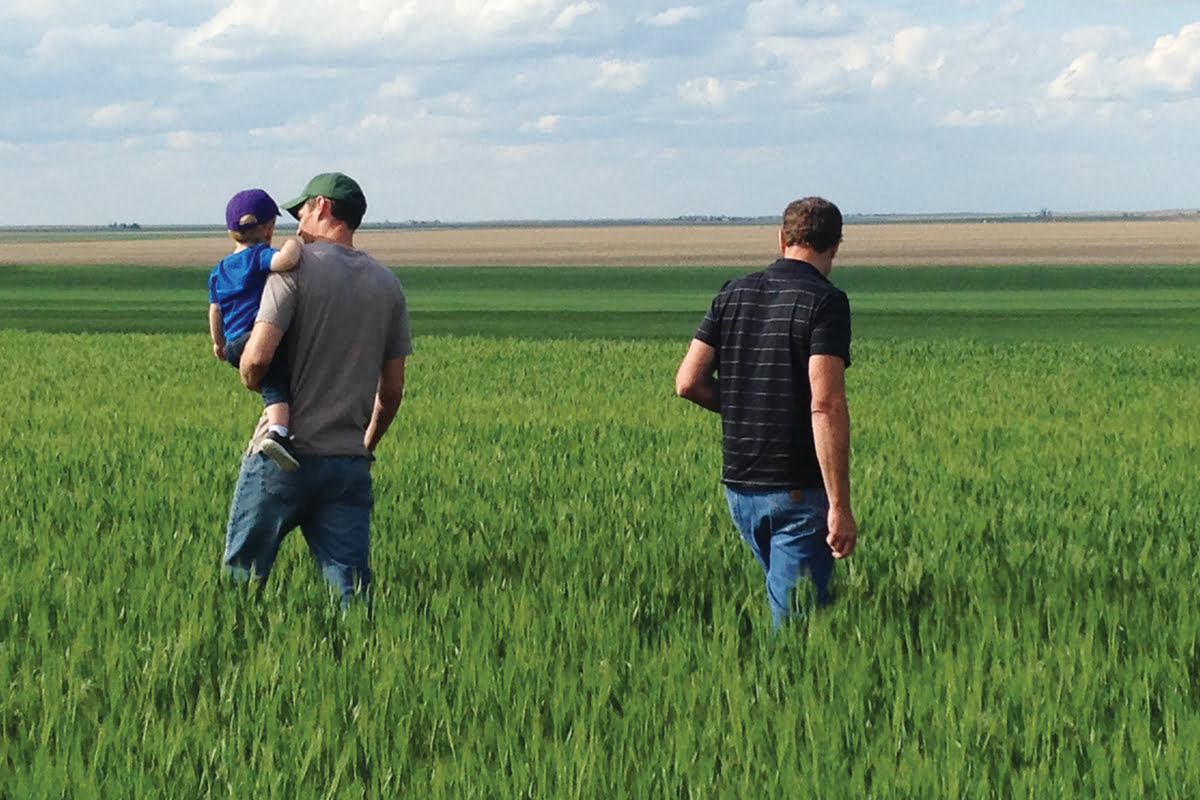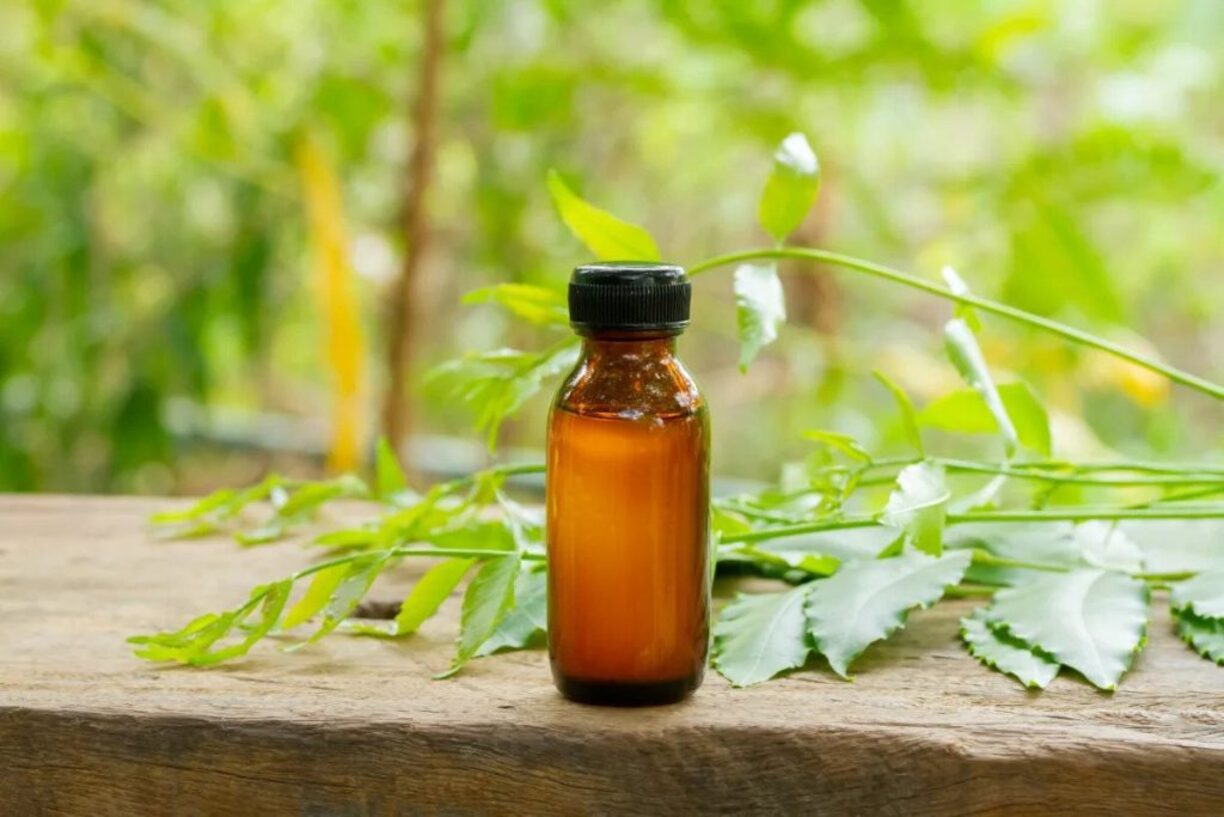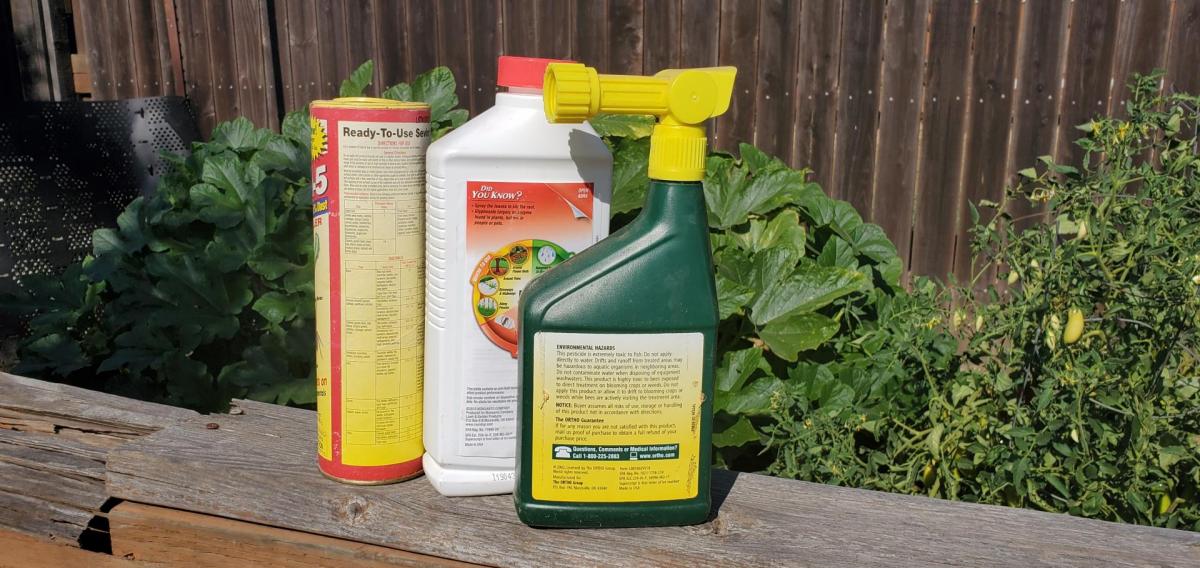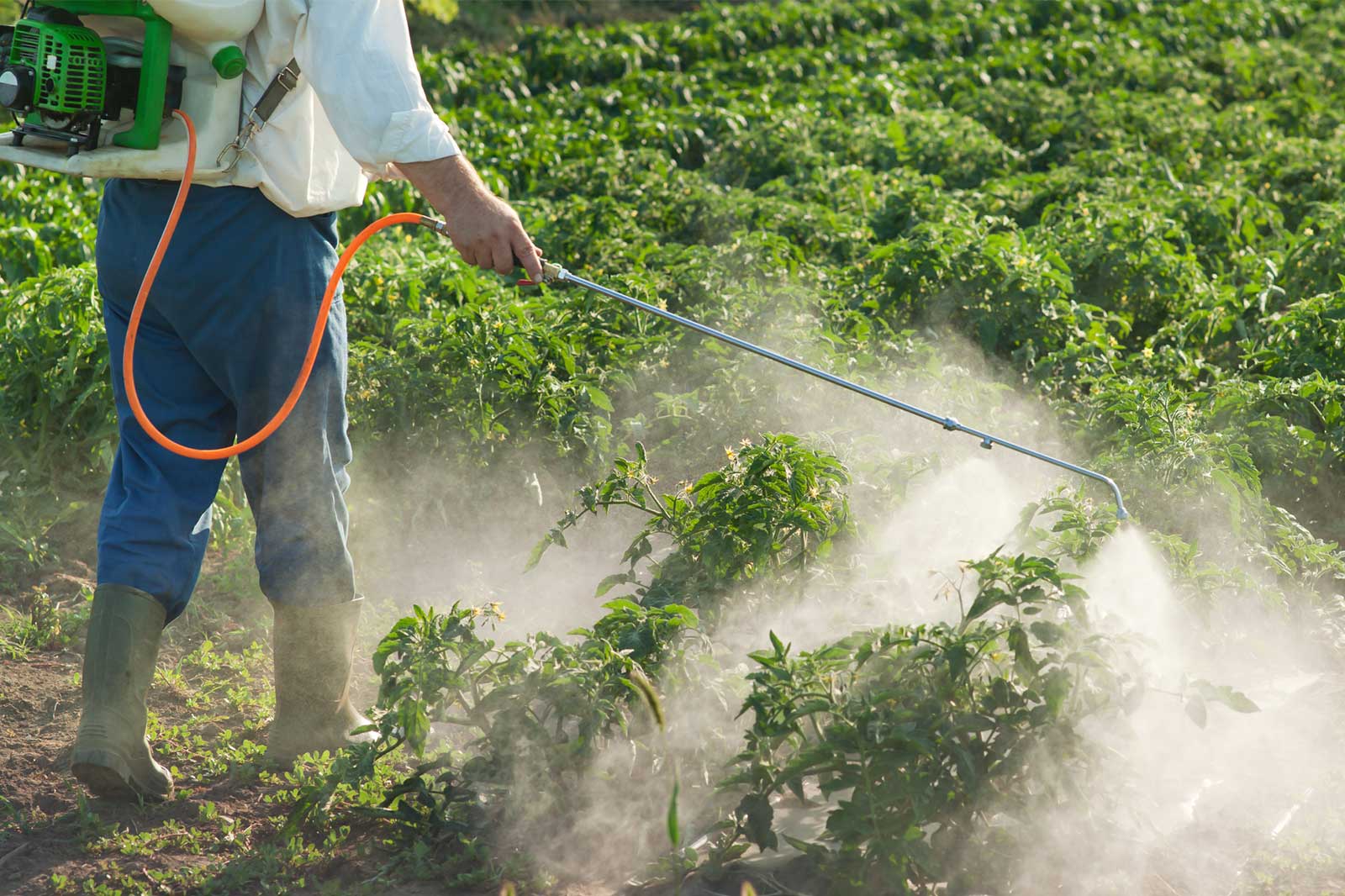Home>Gardening News and Trends>Latest News>What Are The Advantages And Disadvantages Of Using Pesticides
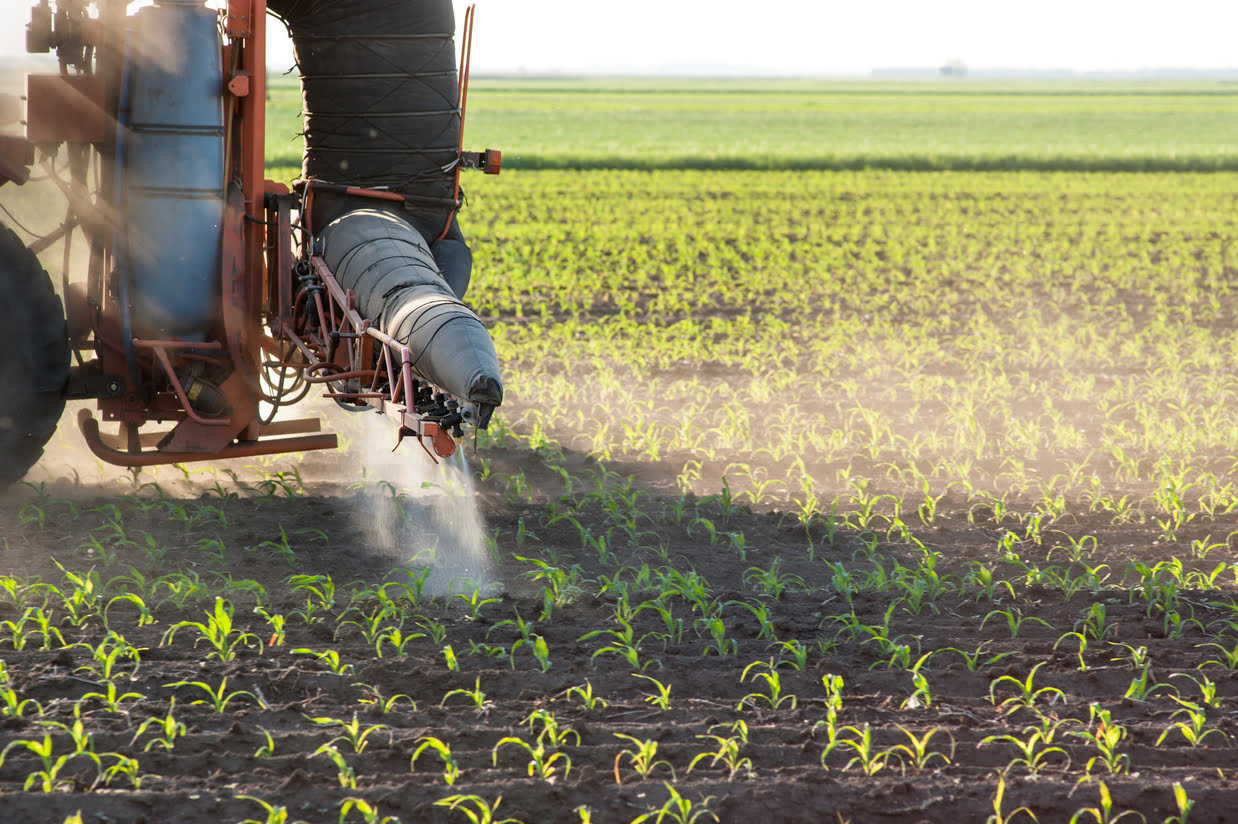

Latest News
What Are The Advantages And Disadvantages Of Using Pesticides
Modified: January 22, 2024
Discover the latest news on the advantages and disadvantages of using pesticides. Stay informed and make informed decisions about pesticide use.
(Many of the links in this article redirect to a specific reviewed product. Your purchase of these products through affiliate links helps to generate commission for Chicagolandgardening.com, at no extra cost. Learn more)
Table of Contents
Introduction
When it comes to managing pests and preserving crop yields, the use of pesticides has become a popular and widely adopted solution. Pesticides are chemical substances that are used to control, repel, or eliminate pests such as insects, weeds, and fungi that can cause significant damage to crops. While pesticides offer several advantages in terms of effective pest control and increased crop yields, they also come with their fair share of disadvantages.
In this article, we will explore the advantages and disadvantages of using pesticides, shedding light on the various aspects that need to be considered when using these chemical substances. It is important to carefully evaluate the pros and cons to make informed decisions and strike a balance between pest management and environmental sustainability.
It is worth noting that the discussion of advantages and disadvantages is not meant to demonize or promote the use of pesticides. Rather, it aims to present a comprehensive analysis of the topic, taking into account both the positive and negative aspects of pesticide use.
With this in mind, let’s delve into the advantages and disadvantages of using pesticides.
Advantages of Using Pesticides
When used responsibly and according to recommended guidelines, pesticides can offer several advantages in the realm of pest control and crop management. Here are some key benefits:
- Effective Pest Control: Pesticides are specifically designed to target and eliminate pests that can cause damage to crops. They are formulated to effectively control insects, weeds, and fungi, which can result in increased crop yields and improved agricultural productivity.
- Increased Crop Yields: By keeping pests at bay, pesticides help protect crops from infestations and diseases that could lead to significant yield loss. When used appropriately and in conjunction with other agricultural practices, pesticides can contribute to higher crop production and improved food security.
- Cost-Effective Solution: Pesticides provide a cost-effective method of pest control. When compared to alternative pest management techniques, such as manual removal of pests or the use of biological control agents, pesticides often require fewer resources and labor, making them more economically viable for farmers.
- Convenience and Ease of Use: Pesticides are designed to be easily applied and distributed, making them convenient for farmers to use. With various formulations available, including sprays, dusts, and granules, pesticide application can be tailored to specific crop types and pest pressures. This allows for efficient pest management and saves time and effort for farmers.
These advantages illustrate the significant role that pesticides play in modern agriculture. However, it is important to recognize that the use of pesticides is not without its drawbacks. It is crucial to consider the potential health risks, environmental impacts, and other factors associated with pesticide use, which will be discussed in the following section.
Effective Pest Control
One of the primary advantages of using pesticides is their ability to provide effective control over pests that can cause significant damage to crops. Pesticides are formulated with active ingredients that target specific pests, whether they are insects, weeds, or fungi.
By using pesticides, farmers can effectively manage and reduce pest populations, preventing them from causing extensive damage to their crops. This is particularly crucial in regions where pests are prevalent and can rapidly multiply, posing a threat to food production and farmers’ livelihoods.
Pesticides work by interfering with the essential biological processes of pests. For instance, insecticides may disrupt the nervous system of insects, herbicides may inhibit the growth of weeds, and fungicides may combat fungal pathogens. These targeted actions allow farmers to control pest populations and minimize the risks of crop damage.
When used properly, pesticides can help mitigate yield losses and increase the quality and quantity of harvested crops. By reducing crop damage caused by pests, farmers can achieve higher crop yields and optimize their agricultural productivity.
It is important to note, however, that the effectiveness of pesticides depends on various factors, such as the timing of application, the correct dosage, and the selection of appropriate products for the specific pests and crops. Farmers must follow label instructions and adhere to integrated pest management practices to maximize the efficacy of pesticide use.
Increased Crop Yields
Another significant advantage of using pesticides is the potential for increased crop yields. Pests can have a detrimental impact on crop health and productivity, leading to reduced yields and economic losses for farmers.
Pesticides play a crucial role in protecting crops from pest infestations and diseases. By effectively controlling pests, pesticides help maintain the health and vigor of plants, allowing them to reach their maximum growth potential.
When crops are protected from pests, they are more likely to produce higher yields. This is because pests can damage various parts of the plant, such as leaves, stems, roots, and fruits, resulting in reduced photosynthesis, nutrient uptake, and overall plant productivity.
Moreover, by preventing pests from feeding on crops, pesticides can also help maintain the quality of harvested produce. Pests can cause cosmetic damage, render crops unfit for sale, or facilitate the entry of pathogens, jeopardizing the marketability and value of the harvest. The use of pesticides can minimize these risks, ensuring that farmers can deliver high-quality crops to consumers.
Increased crop yields not only benefit farmers’ income but also contribute to food security on a global scale. As the world’s population continues to grow, the demand for food increases. Using pesticides to protect crop yields can help meet this demand and ensure an adequate and stable food supply.
However, it is essential to use pesticides judiciously and consider other sustainable agricultural practices to maintain soil health, preserve biodiversity, and minimize potential negative impacts on the environment and human health.
Cost-Effective Solution
Using pesticides can offer a cost-effective solution for pest management in agriculture. When compared to alternative pest control methods, pesticides often provide a more affordable and efficient option for farmers.
Manual pest control methods, such as physically removing pests or using barriers, can be labor-intensive and time-consuming. These methods require significant human resources, which can increase the overall costs of pest management. Additionally, these techniques may not be as effective in controlling pests on a large scale.
Pesticides, on the other hand, allow for quick and widespread application, reducing the need for extensive labor. Farmers can target large areas of crops with relative ease, saving both time and money. This makes pesticides a practical choice, especially for large-scale agricultural operations.
Furthermore, pesticides can help mitigate the economic losses caused by pests. By controlling pest populations, farmers are better able to protect their crops and minimize potential damage. This, in turn, helps maintain the overall profitability of their operations.
Additionally, pesticides can contribute to overall cost savings by increasing crop yields. As pests are controlled and crop health is optimized, farmers can expect higher productivity and higher-quality harvests. This translates to increased revenue and improved returns on investment.
It is important to note that while pesticides can be a cost-effective solution, prudent and responsible use is crucial. Farmers should consider factors such as the cost of the pesticides themselves, as well as the associated costs of application, safety measures, and potential environmental impacts. It is essential to weigh the costs against the potential benefits to ensure that the use of pesticides remains economically viable and sustainable in the long run.
Convenience and Ease of Use
A significant advantage of using pesticides is the convenience and ease of use they offer to farmers. Pesticides are designed to be user-friendly and accessible, providing a convenient solution for pest management.
With various formulations available, such as sprays, dusts, and granules, farmers can choose the most suitable method of pesticide application for their specific crops and pest pressures. This flexibility allows for efficient and targeted pest control strategies.
Pesticides can be easily applied to crops, either manually or using equipment, making the process quick and straightforward. Farmers can easily distribute pesticides across large areas, ensuring comprehensive pest management.
The convenience of using pesticides also extends to their availability. Pesticides are widely accessible, and a broad range of products is readily available on the market. This allows farmers to select the most appropriate pesticide for their specific pest issues and crop type.
Furthermore, the development and advancements in pesticide application technologies have further enhanced the ease of use. For example, innovative techniques such as precision agriculture and aerial spraying have made pesticide application more efficient and effective. These technologies enable targeted application, reducing the potential for pesticide drift and minimizing waste.
The ease of use of pesticides can save farmers valuable time and effort. By simplifying the pest control process, farmers can focus on other essential aspects of their operations, such as crop management and farm productivity.
However, it is crucial for farmers to follow the recommended guidelines and safety precautions when using pesticides. This ensures that pesticides are applied correctly, minimizing risks to the environment, non-target organisms, and human health.
Overall, the convenience and ease of use offered by pesticides make them a practical tool for farmers in managing pest issues and maintaining crop health.
Disadvantages of Using Pesticides
While pesticides can be effective tools for pest control and crop management, they also come with several disadvantages that need to be considered. Understanding and addressing these drawbacks is essential for the responsible use of pesticides. Here are some key disadvantages:
- Health Risks: Pesticides contain chemical substances that can pose health risks to humans and animals. Exposure to pesticides has been linked to various health issues, including skin irritation, respiratory problems, neurotoxicity, and even cancer. Farmers and workers involved in pesticide application are particularly vulnerable. Proper protective measures and adherence to safety guidelines are essential to minimize these risks.
- Environmental Impact: Pesticides can have adverse effects on the environment. They can contaminate soil, water bodies, and groundwater, leading to pollution and harming ecosystems. Pesticides can also harm non-target organisms, including beneficial insects, birds, and aquatic life. This disruption of natural ecological balance can have significant consequences for biodiversity and the overall health of ecosystems.
- Development of Pesticide Resistance: Frequent and indiscriminate use of pesticides can contribute to the development of pesticide resistance in target pests. This means that pests become less susceptible to the effects of the pesticides over time, requiring higher doses or different types of pesticides for effective control. Pesticide resistance can lead to reduced efficacy and increased costs for farmers, as they need to employ alternative control methods.
- Harm to Non-Target Organisms: Pesticides can unintentionally harm beneficial insects, such as pollinators like bees, as well as natural enemies of agricultural pests, including predators and parasites. This can disrupt natural pest control mechanisms and lead to imbalances in ecosystems. Additionally, the impact of pesticides on aquatic organisms, such as fish and amphibians, is a concern due to potential runoff into water bodies.
It is important to mitigate these disadvantages and minimize the negative impacts of pesticide use. Utilizing integrated pest management (IPM) strategies, which incorporate a combination of cultural, biological, and chemical control methods, can help reduce reliance on pesticides and promote sustainable pest management practices.
Health Risks
One of the significant disadvantages of using pesticides is the potential health risks they pose to humans and animals. Pesticides contain chemical substances that are designed to target and eliminate pests, but these same substances can have adverse effects on human health.
Exposure to pesticides can occur through various routes, including inhalation, skin contact, and ingestion. Farmers and workers involved in pesticide application are particularly susceptible to exposure. Prolonged or excessive exposure to pesticides can lead to a range of health issues.
Contact with pesticides can cause skin irritation, rashes, and allergic reactions. Some pesticides may have neurotoxic effects, affecting the nervous system and leading to symptoms such as headaches, dizziness, and nausea. Long-term or repeated exposure to certain pesticides has been associated with more serious health concerns, including respiratory problems, reproductive issues, endocrine disruption, and even an increased risk of certain cancers.
Children are especially vulnerable to the effects of pesticides due to their developing bodies and higher exposure risks. Their still-developing organs and systems may be more susceptible to the toxic effects of these chemicals. Pregnant women are also at risk, as pesticide exposure can have detrimental effects on fetal development.
To minimize health risks, it is crucial for farmers and pesticide users to follow safety guidelines and use appropriate protective measures, such as wearing protective clothing, gloves, masks, and using proper equipment during pesticide handling and application. Proper training on the safe use and storage of pesticides is essential to reduce the chances of accidental exposure.
Additionally, regulatory agencies play a significant role in setting standards and regulations for pesticide use, ensuring that maximum residue limits are established for food safety and addressing potential risks to human health. Regular monitoring and enforcement of these regulations are vital to protect public health.
It is crucial to strike a balance between effective pest control and minimizing potential health risks. Integrating alternative pest management approaches, such as biological control methods, crop rotation, and cultural practices, can help reduce reliance on pesticides and mitigate health risks associated with their use.
Environmental Impact
Another significant drawback of using pesticides is the potential environmental impact they can have. Pesticides are designed to target and eliminate pests, but their use can inadvertently harm ecosystems and the environment as a whole.
One of the primary concerns is the contamination of soil, water bodies, and groundwater. Pesticides can leach into the soil, where they can persist and accumulate over time. This contamination can affect the quality of soil, potentially leading to reduced fertility and negatively impacting beneficial soil organisms.
When pesticides enter water bodies, such as rivers, lakes, and streams, they can have detrimental effects on aquatic organisms. Aquatic life, including fish, amphibians, and invertebrates, are particularly vulnerable to pesticide exposure. Pesticides can disrupt aquatic ecosystems, harming both targeted pests and non-target organisms in the water.
Pesticides can also affect non-target organisms on land. For example, some pesticides may unintentionally harm beneficial insects like pollinators (e.g., bees and butterflies) and natural enemies of pests (e.g., ladybugs and spiders). These organisms play vital roles in maintaining ecosystem balance and biodiversity. The loss of these beneficial species can lead to imbalances, potentially promoting pest outbreaks and further reliance on pesticides.
Furthermore, the widespread use of pesticides can contribute to the decline of certain wildlife populations, including birds that feed on insects affected by pesticides. These impacts on non-target organisms can have far-reaching consequences for ecosystem health.
To mitigate the environmental impact of pesticides, it is important to adopt sustainable agricultural practices. Integrated pest management (IPM) approaches can help minimize pesticide use, placing an emphasis on prevention, monitoring, and the use of non-chemical control methods whenever possible. Crop rotation, cultural practices, and the promotion of natural enemies of pests can all be incorporated into an IPM strategy.
Regulatory agencies play a crucial role in monitoring and enforcing pesticide regulations to ensure that they are used responsibly and in a manner that minimizes environmental harm. Farmers and pesticide users should also be proactive in staying informed about best practices and utilizing alternative pest control methods to reduce reliance on chemical pesticides.
Development of Pesticide Resistance
One of the significant disadvantages associated with the use of pesticides is the development of pesticide resistance in target pests. Pesticide resistance occurs when pests evolve and become less susceptible to the effects of the pesticides used to control them.
This resistance can arise due to several factors. One of the main contributors is the selective pressure exerted by the repeated and widespread use of pesticides. When pests are exposed to a particular pesticide over an extended period, individuals with natural genetic variations that allow them to survive the pesticide’s effects are more likely to survive and reproduce. Over time, this natural selection process can result in a population of pests that is less affected by the pesticide.
As a result, higher doses or different classes of pesticides may be required to achieve the desired level of pest control, leading to increased costs for farmers. This constant need for new strategies and products to combat resistant pests can create a cycle of reliance and escalation in pesticide use.
The development of pesticide resistance can have significant implications for crop management and pest control strategies. It underlines the importance of adopting integrated pest management (IPM) approaches, which emphasize a combination of cultural, biological, and chemical control methods. By diversifying pest control methods, including the use of biological control agents and crop rotation, the selection pressure on pests is reduced, minimizing the risk of resistance development.
Another key aspect of managing pesticide resistance is monitoring and early detection. Regular surveillance and testing of pest populations can help identify signs of resistance and inform decision-making regarding appropriate pest control strategies. This can include rotating between different classes of pesticides, using combinations of pesticides with different modes of action, and implementing targeted application techniques to minimize the risk of resistance.
Education and training are also critical in addressing pesticide resistance. Farmers and pest control professionals need to stay informed about best practices, proper pesticide usage, and the importance of following label instructions. Awareness about the potential consequences of overreliance on pesticides and the need for integrated approaches is essential for sustainable pest management.
By adopting preventative measures and strategic pest management practices, the development of pesticide resistance can be slowed or even prevented, ensuring the long-term effectiveness of pest control strategies.
Harm to Non-Target Organisms
One of the critical concerns associated with the use of pesticides is the potential harm they can cause to non-target organisms. While pesticides are designed to target specific pests, they can unintentionally affect other living organisms in the surrounding environment.
Non-target organisms include beneficial insects, such as bees, butterflies, and natural predators of agricultural pests. These organisms play a vital role in pollination, nutrient cycling, and natural pest control. However, they can be exposed to pesticides through direct contact or indirect contamination of their habitats or food sources.
Perhaps the most well-known example is the impact of pesticides on pollinators. Bees, in particular, are essential for the pollination of many food crops. Pesticides can interfere with their navigation, foraging abilities, and reproductive systems, leading to declines in bee populations. This can have severe implications for agricultural productivity and ecosystem health.
In addition to pollinators, natural enemies of pests, such as ladybugs, spiders, and parasitic wasps, can be affected by pesticides. When these beneficial organisms are harmed or killed by pesticide exposure, the ecological balance can be disrupted, leading to potential outbreaks of pests that were previously kept in check.
Furthermore, aquatic organisms can be negatively impacted by pesticide runoff into water bodies. Fish, amphibians, and invertebrates can suffer from direct toxic effects or through the degradation of their habitats. This contamination of water systems can have long-lasting consequences for aquatic ecosystems and biodiversity.
To reduce harm to non-target organisms, it is crucial to employ integrated pest management (IPM) strategies that consider the ecological interactions between pests, beneficial organisms, and the overall environment. This may involve using targeted and selective pesticides, as well as timing applications to minimize exposure to non-target organisms.
Additionally, promoting habitat diversity and creating refuge areas for beneficial organisms can help support their populations and enhance natural pest control. The implementation of buffer zones near water bodies, where pesticide use is minimized or restricted, can help protect aquatic ecosystems from pesticide contamination.
Education and awareness are also essential in mitigating harm to non-target organisms. Farmers, pesticide applicators, and the general public should be educated about the importance of protecting beneficial insects and the potential consequences of pesticide use on ecological balance.
By adopting responsible pesticide practices and considering the potential effects on non-target organisms, it is possible to minimize the unintended harm to these important components of our ecosystems.
Conclusion
After examining the advantages and disadvantages of using pesticides, it is evident that they play an important role in pest control and crop management. Pesticides offer effective means of controlling pests, increasing crop yields, providing a cost-effective solution, and offering convenience and ease of use for farmers.
However, it is crucial to acknowledge the potential drawbacks associated with pesticide use. Health risks to humans and animals, environmental impact, development of pesticide resistance, and harm to non-target organisms are all important considerations that need to be taken into account.
To mitigate these disadvantages, it is recommended to adopt integrated pest management (IPM) practices. This approach involves a combination of preventative measures, monitoring, and the integration of various pest control methods to reduce reliance on pesticides. By incorporating cultural practices, biological control, and targeted chemical interventions, farmers can optimize pest control while minimizing the risks and impacts associated with pesticide use.
Regulatory agencies, educational institutions, and industry stakeholders also have a crucial role to play in promoting responsible pesticide use. This includes setting and enforcing regulations, providing training and guidance on safe pesticide handling, and raising awareness about the potential risks and environmental concerns associated with pesticide use.
Ultimately, the goal should be to achieve a balance between effective pest management and sustainable agricultural practices. By considering both the benefits and limitations of pesticides, and by adopting alternative strategies whenever possible, it is possible to safeguard human health, protect the environment, and maintain the long-term viability of our agricultural systems.
